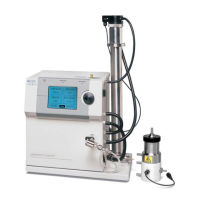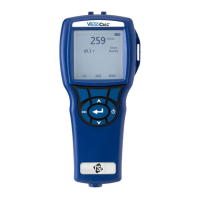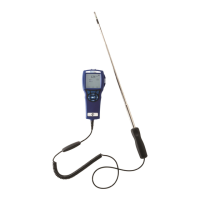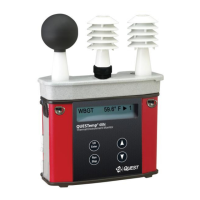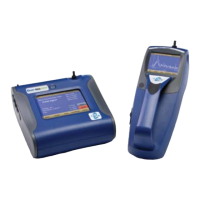Theory of Operation B-13
Condensation Particle Counter
There are several models of CPCs: Model 3772, 3775, 3776, 3010,
3022A, 3025A CPCs, 3782, 3785, and 3786 WCPCs. Model 3782,
3785 and 3786 WCPCs use water as the condensing fluid. The rest
of the CPCs use butanol as the condensing fluid. All CPCs are
capable of interfacing with the Electrostatic Classifier to form an
SMPS
™ spectrometer.
Refer to the individual CPC instruction manuals for the theory of
operation of the CPCs.
CPC Theory
The mechanism used to grow particles in the CPC is heterogeneous
condensation, whereby particle growth is promoted by the presence
of condensation nuclei. The CPC uses this mechanism to measure
the number concentration of submicrometer aerosol particles.
The saturation ratio of the condensing vapor determines the
smallest particle size detected by the CPC. The saturation ratio is
defined as the actual vapor partial pressure, p, divided by the
saturation vapor pressure, p
s
, at a given temperature. The
condensing vapor is butyl alcohol for 3772, 3775, 3776, 3010,
3022A, and 3025A CPCs. In 3782, 3785, and 3786 WCPC, the
condensing vapor is water.
The relationship between the saturation ratio and the minimal
particle size is controlled by the Kelvin equation:
Equation B-8
where:
σ
= the surface tension
M = molecular weight
ρ
= the density of the liquid
d
*
= the Kelvin diameter.
R = universal gas constant
T = absolute temperature
The Kelvin diameter is the droplet diameter that will neither grow
nor evaporate at the saturation ratio p/p
s
. For every droplet size
there is a saturation ratio that will exactly maintain the particle
size. If the saturation ratio is too small, the particle evaporates; if it
is too great, the particle grows.
